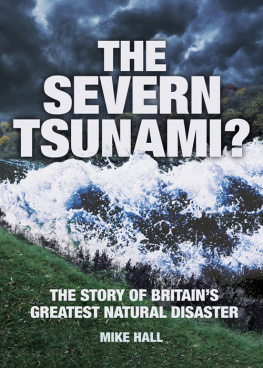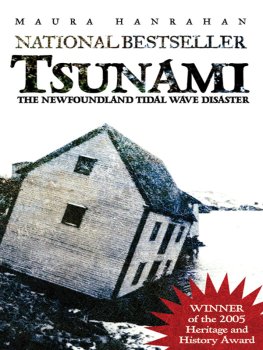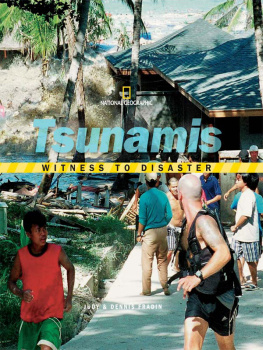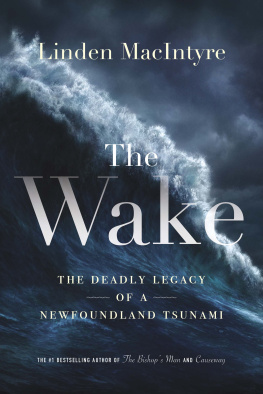
In memory of the medieval carved Head of a Maiden, hacked from its stand and stolen from St Thomass Church, Redwick, at about 10 a.m. on Saturday, 9 June 2012. A witness to the flood disaster of 1607, what tales could she have told?
CONTENTS
About nine of the clock in the morning, the same being most fairly and brightly spread, many of the inhabitants prepared themselves to their affairs.
Then they might see afar off huge and mighty hills of water tumbling over one another as if the greatest mountains in the world had overwhelmed the low villages and marshy grounds. Sometimes it dazzled many of the spectators that they imagined it had been some fog or mist coming with a great swiftness towards them, and with such a smoke as if mountains were all on fire, and to the view of some it seemed as if millions of thousands of arrows had been shot forth all at one time. So violent and swift were the outrageous waves that in less than five hours space most part of those countries (especially the places that lay low) were all overflown, and many hundreds of people, men, women and children, were quite devoured; nay, more, the farmers and husbandmen and shepherds might behold their goodly flocks swimming upon the waters dead.
(Gods Warning to his people of England, printed in 1607 by William Jones of Usk, Monmouthshire.)
One evening in April 2005 my wife Linda and I, staying at her parents home in Almondsbury, north of Bristol, settled down to watch Killer Wave of 1607, a documentary in the BBC2 Timewatch series, giving an account of the flood that had devastated the lowland areas on either side of the Bristol Channel in the early seventeenth century. We knew that this had affected nearby parts of South Gloucestershire and we were looking forward to seeing pictures of places that we knew well.
To be honest, we were a little disappointed. Much of the programme had been filmed in those strange foreign parts on the Welsh side of the Severn Bridge. A place called Redwick, which we had never heard of, figured prominently in some of the most dramatic reconstructions, but there was virtually nothing about Almondsbury, Olveston or South Gloucestershire in general. Little did we know that in less than two years time we would be living in Redwick and attending the last of a series of events being held in the village to mark the 400th anniversary of the Great Flood.

Redwick Church.
Killer Wave of 1607 introduced to the wider public the theory proposed by Professor Simon Haslett and Dr Ted Bryant that the flood was caused by a tsunami. The programme had been filmed during the summer of 2004 and by the time it was broadcast its central thesis had been made poignantly topical by the awful events of Boxing Day in South East Asia and everyone watching knew what a tsunami was.
Some academics dispute Haslett and Bryants conclusions, preferring to believe that the flood was the result of a storm surge. I am not a specialist in this field but I will try to summarise the evidence for both explanations in this book which would not have been written if it had not been for the interest generated in the subject by the tsunami theory. I am grateful to all those (too numerous to list here) who have given me practical help and advice. Any errors of fact or interpretation are, of course, entirely my own work.
Mike Hall, Redwick, Monmouthshire, 2013.
Illustrations: All photographs are by Mike or Linda Hall unless otherwise stated. I am particularly grateful to Richard Jones for allowing me access to the pictures used in the Flood 400 exhibition in 2007 (and for his advice and comments), also to Jane Gunn of Wedmore for her pictures of flooding on the Somerset Levels. The postcards used are from my own collection. Images sourced from Wikipedia are reproduced under the Creative Commons Attribution Share Alike licence. Finally, I could not have managed without the help of Linda and my younger daughter Elizabeth (who understand the minds of computers) in sorting the images for publication.
1
DATING AND
MEASURING
Exactly when the flood happened has been a source of confusion over the years. It is usually referred to as the 1607 flood but many of the flood marks and other contemporary sources have it dated at 1606. The date of the event is given as 20 or 30 January, which makes marking the anniversary on the correct day problematic.
In Roman times the start of the year was reckoned to be the Ides (22) of March, a date infamous for the assassination of Julius Caesar. The Roman Catholic Church followed this practice until the sixteenth century and the fact that even now the tax year begins in April rather than January is a reminder of how things used to be. It took a while for the new system to become accepted, especially in Protestant countries. In England and Wales the New Year officially began on Lady Day (25 March). At the time of the flood, local people would have considered that they were nearing the end of 1606, while more up-to-date folk in London and on the continent would have said it was 1607.
The other factor is the change from the Julian calendar to the Gregorian one. The old calendar had allowed for the fact that a year is actually 365 days long by introducing the concept of a Leap Year every four years, with an extra day on 29 February. However this adjustment was not precise enough and over the previous 1,500 years the calendar had got progressively out of phase with the seasons so that festivals such as Easter and Christmas had somehow drifted from their rightful place. Pope Gregory proposed to deal with this anomaly by declaring that in future, three out of the next four century years would not be a leap year. 1600 was a leap year but 1700, 1800 and 1900 would not be. To get the calendar back in line with the seasons he decreed that ten days would be taken out altogether so that 4 October would be immediately followed by 15 October.
This new Gregorian calendar was introduced in Italy immediately, but once again other countries were slow to bring in the change. It was not done in England until 1752 when it famously led to riots and the slogan Give us back our ten days! In this instance the Scots were ahead, introducing the new calendar in 1600, but even when their king, James VI, moved south in 1603 to become King James I of England (and Wales), the change was not made.
To sum up: the Great Flood occurred on 20 January 1606 (old style) and 30 January 1607 (new style).
The confusion has not gone away. In 2007, the Flood 400 organisers put on a Wave of Bells to commemorate the anniversary. Bells were rung in all the churches along the Welsh coast, from Rumney in the west to Chepstow in the east. This event took place on 20 January and I remember being told at great length by a steward in one of the reconstructed houses at the open-air museum at St Fagans that they should have done it on 30 January. However, there was also a Service of Commemoration, using words from the Prayer Book of the time, on 30 January, so the organisers of Flood 400 wisely had both dates covered.
In his West Country Weather Book, which was published in 1995, author Barry Horton mirrored the uncertainty. He had looked at accounts of the flood in John Latimers Annals of Bristol (19008), William Adams Chronicle of Bristol (1910), G.E. Bakers article in Bedfordshire Notes & Queries (1884) and T.H. Bakers
Next page









